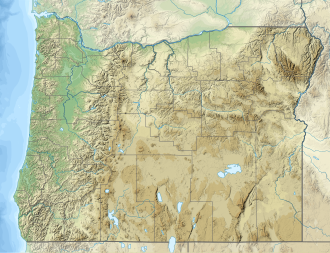| Santiam Lake | |
|---|---|
 The lake as seen from Three Fingered Jack | |
| Location | Oregon Cascades NW of Santiam Pass, Linn County, Oregon, United States |
| Coordinates | 44°28′41″N121°53′06″W / 44.47792°N 121.88496°W |
| Type | Paternoster lake |
| Primary outflows | North Santiam River |
| Basin countries | United States |
| Max. length | 1,000 ft (300 m) |
| Max. width | 1,000 ft (300 m) |
| Surface elevation | 5,124 ft (1,562 m) |
| Frozen | winter and spring |
| Islands | none |
| Settlements | none |

Santiam Lake is a lake in the U.S. state of Oregon, west of Three Fingered Jack in the Cascade Range. It is headwaters for the North Santiam River and drains a portion of the southwestern Mount Jefferson Wilderness. [1] The lake is stocked bi-annually with Brook and Rainbow trout. [2] It can be accessed from various trails in the Jefferson Wilderness, including Santiam Lake Trail #3491. [3] It is located about 6.5 miles northwest of Santiam Junction, Oregon.


